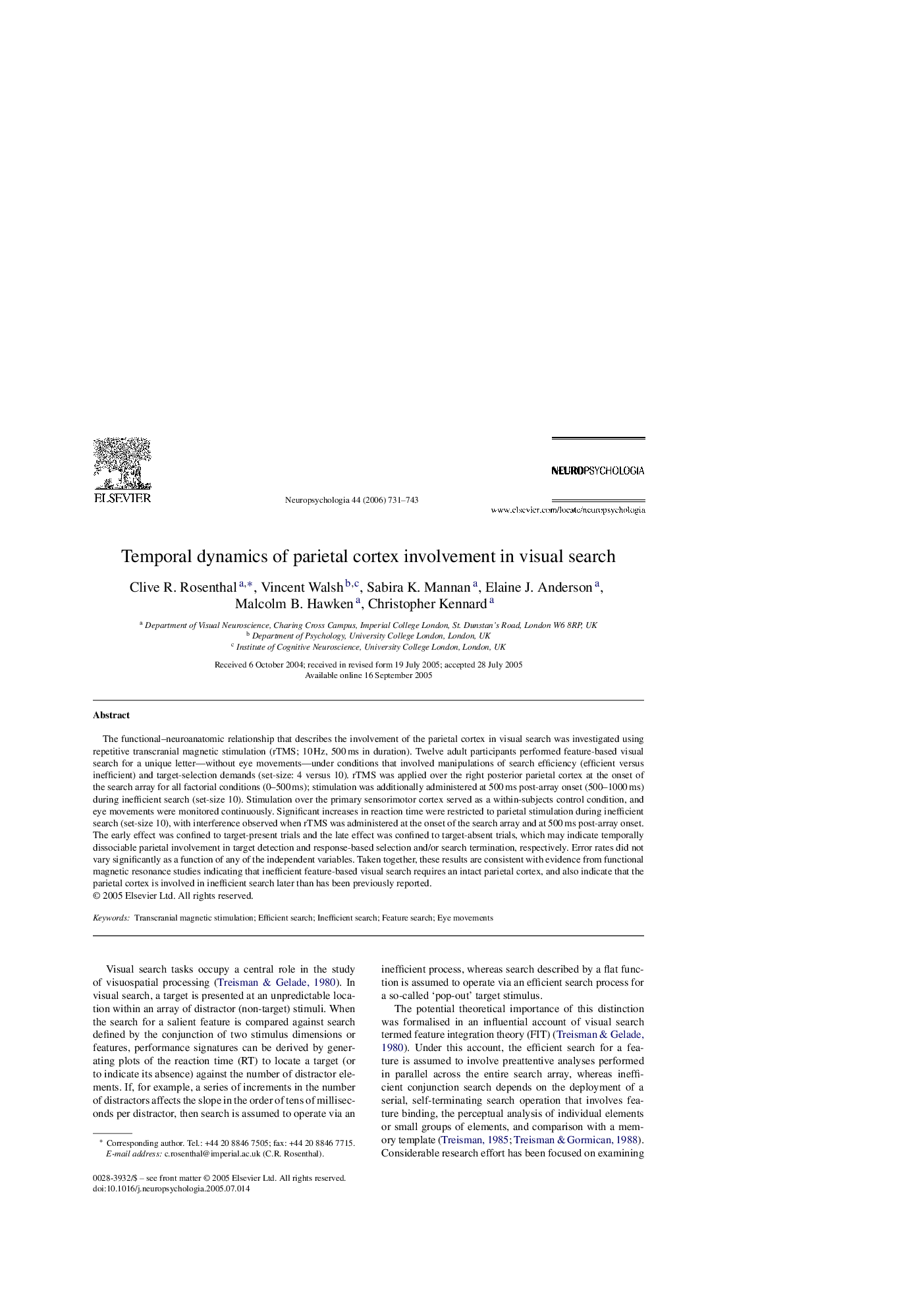| Article ID | Journal | Published Year | Pages | File Type |
|---|---|---|---|---|
| 945678 | Neuropsychologia | 2006 | 13 Pages |
The functional–neuroanatomic relationship that describes the involvement of the parietal cortex in visual search was investigated using repetitive transcranial magnetic stimulation (rTMS; 10 Hz, 500 ms in duration). Twelve adult participants performed feature-based visual search for a unique letter—without eye movements—under conditions that involved manipulations of search efficiency (efficient versus inefficient) and target-selection demands (set-size: 4 versus 10). rTMS was applied over the right posterior parietal cortex at the onset of the search array for all factorial conditions (0–500 ms); stimulation was additionally administered at 500 ms post-array onset (500–1000 ms) during inefficient search (set-size 10). Stimulation over the primary sensorimotor cortex served as a within-subjects control condition, and eye movements were monitored continuously. Significant increases in reaction time were restricted to parietal stimulation during inefficient search (set-size 10), with interference observed when rTMS was administered at the onset of the search array and at 500 ms post-array onset. The early effect was confined to target-present trials and the late effect was confined to target-absent trials, which may indicate temporally dissociable parietal involvement in target detection and response-based selection and/or search termination, respectively. Error rates did not vary significantly as a function of any of the independent variables. Taken together, these results are consistent with evidence from functional magnetic resonance studies indicating that inefficient feature-based visual search requires an intact parietal cortex, and also indicate that the parietal cortex is involved in inefficient search later than has been previously reported.
